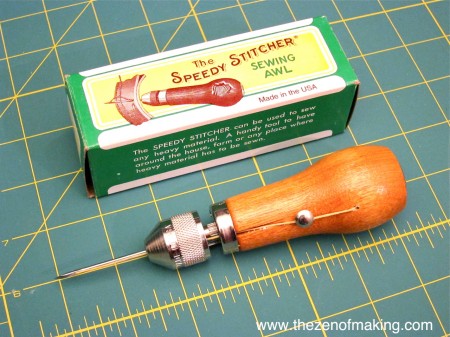
Have you ever used a stitching awl? If not, fair warning: you’re about to need one.
A stitching awl is a specialized tool that’s basically a hand-held manual sewing machine that’s made to sew through thick materials like canvas, leather, and wool. It comes with both a curved and a straight needle and a spool of heavy-duty waxed thread. (According to the package, you can also purchase a smaller needle and fine thread for thinner materials.)
If you want to check one out for yourself, I have the Speedy Stitcher Sewing Awl 120, which is pretty easy to track down online.
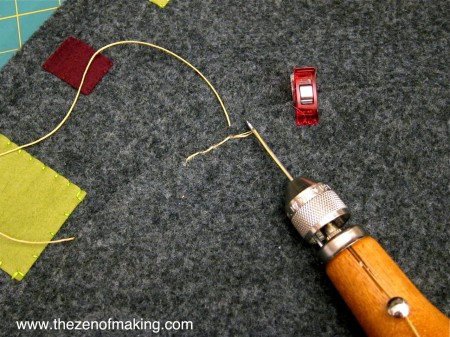
There’s a bit of a learning learning curve for getting the stitch spacing and tension right, but once you get the hang of it, the sewing awl makes nice lock stitches just like a sewing machine.
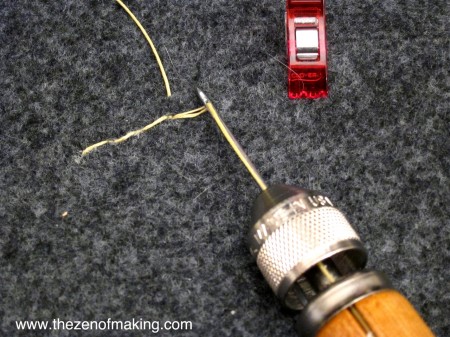
I used mine to finish stitching a cat bed. And, while it wasn’t any faster than hand-sewing, it made stitching through four full layers of thick felt incredibly easy.
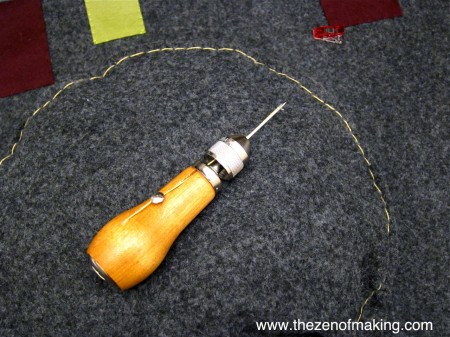
Because the sewing awl is hand-held, I felt like I had complete control over my stitch placement. It was also really easy to finish sewing the bottom cushion of the cat bed shut after I added the padding. I never had to cut the thread, so I could pick up the awl and continue sewing right where I left off, which made for a much cleaner, more continuous line.
(Kindly ignore how lopsided the stitching looks in this photo. It was taken post-stuffing, so the shape is stretched. Also, my first few inches weren’t exactly pretty.)
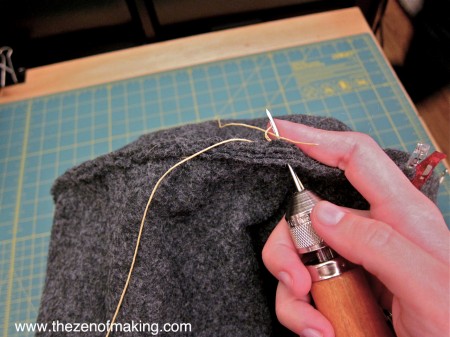
See that massive needle? That’s why four layers of felt ain’t no thang. It’s also why you should invest in a good thimble. (I’ll spare you the finger prick photos.)
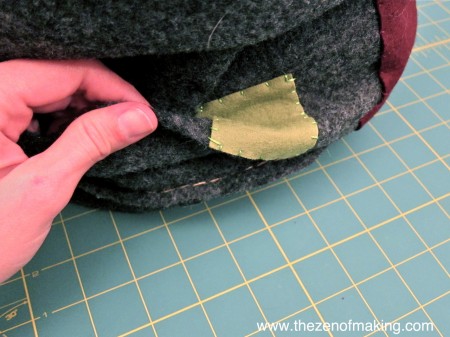
The lock stitches from the awl are way more secure than my hand-stitching, so it was the perfect choice for my cat bed project. I tugged and yanked to it into shape after I was done sewing, and there was absolutely no sign of loosening or unraveling.
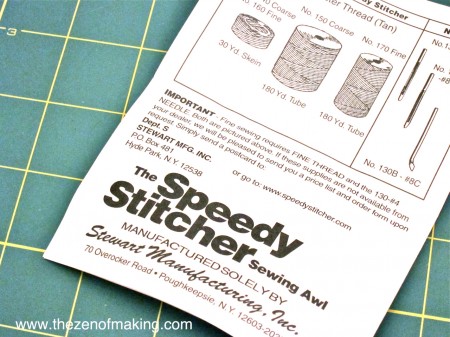
I’d definitely recommend the Speedy Stitcher—especially for thick fabrics and awkward shapes. It’s also nice that it’s portable, so projects that once required a sewing machine can now be done on the go.
Next steps: Ordering more needles and additional spools of thread so I can test it on other things. I’m really curious about using it on shoes or in home decor projects, so I’ll let you know what happens!
Unrelated: Is it wrong that I’m more than a little bit in love with this company because they request that I send a postcard for a price list?
What do you think? Is a sewing awl now on your crafty must-have list?
**Please note that the link provided above is an affiliate link, and I will be compensated if you choose to make a purchase after clicking through.**

How do you think it’d do with jean fabrics?
Hello, ladyfriend!
I think it would work great on denim. It’s definitely sharp enough. But, if you’re actually making pants, you’d probably need the fine needle and fine thread, since the standard thread is really quite thick.
My husband uses the speedy stitcher to repair his hockey gear; goalie pads, trapper, and hockey bag. It’s great, because I can’t do that with my sewing machine!
I remember using one of these in the late 1980s in an after school leather craft class! I didn’t even know what it was called, other than the Italian for “leather needle”.
I love my sewing machines and one of them is a vintage Singer especially for thick vinyl and leather, but a few times along the journey I have felt I needed an awl, as it was very practical for awkward textures and hard to reach areas. I might track one down later this year.
Thanks for the trip down memory lane!
I’ve often used a regular awl to make sewing holes in thicker projects, but I love that the sewing awl completely removes the next sewing step. Huzzah, efficiency!
Can a disabled person use it if material isn’t too thick? I love the note pad project.
I think it might depend on the kind of disability. The needle is sharp, so it didn’t require much pressure going through felt. It did require the use of both hands, though. (It might be possible to use it with one hand, but I’m not sure.) Personally, I didn’t need to work very hard to use it, but I wasn’t considering alternative needs while I was stitching, so I can’t say for sure.
I’m happy to try to answer more specific questions if you’ve got them!